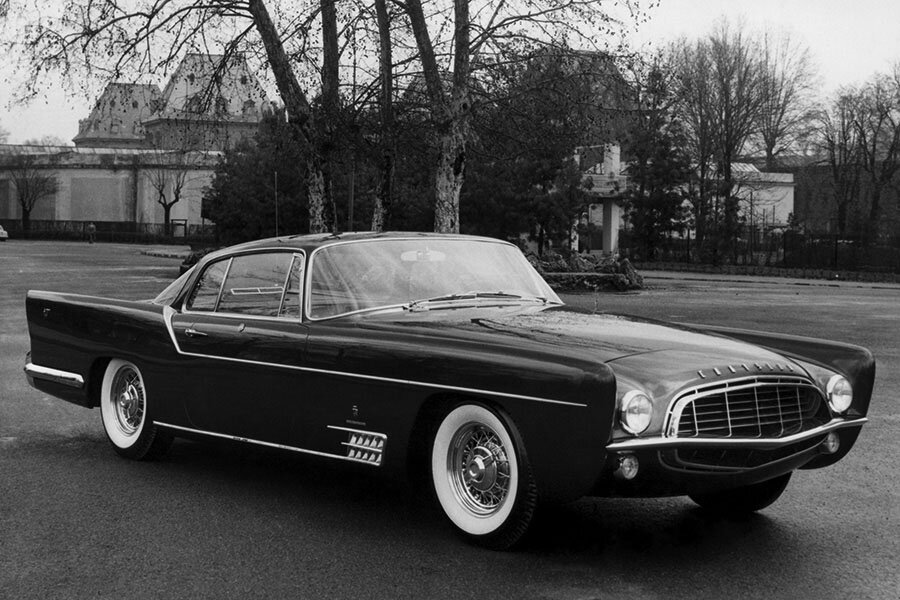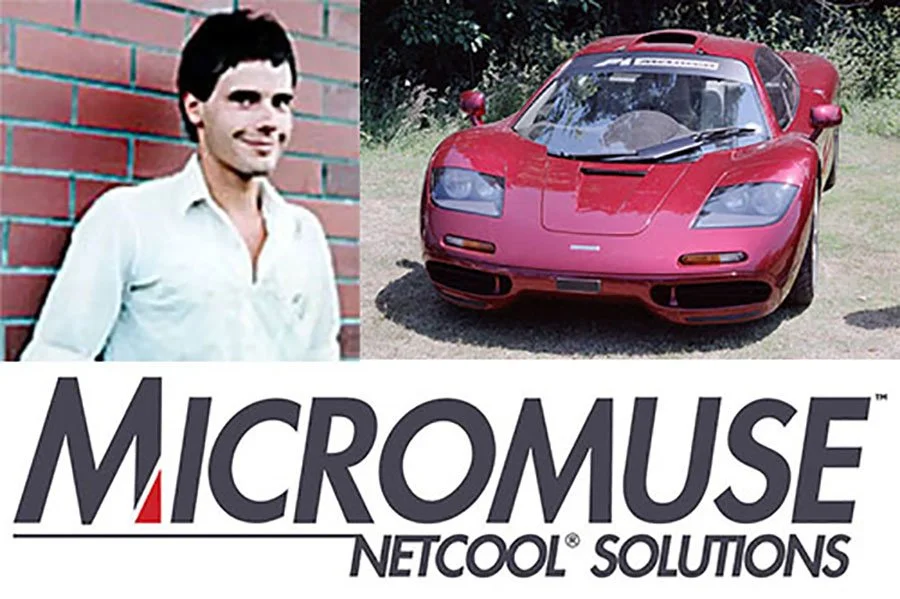Bio: Mohammad Pahlavi - last Shah of Iran
/Mohammad Pahlavi’s father, Reza, was an Iranian army general who seized power in a 1921 coup d'etat.
Two years after the coup, Reza Pahlavi installed himself as Iran’s prime minister and, in 1925, deposed the existing Shah (Ahmed Qajar) to become the country’s legal monarch.
Of Reza Pahlavi’s ten children, Mohammad was the eldest son.
In September 1931, at age 11, Mohammad was sent to the Swiss boarding school, Institut Le Rosey. He returned to Iran in 1936 and registered at the Tehran military academy. During his college years, Mohammad was appointed Inspector of the Army and graduated as a Second Lieutenant in 1938 at which point he was almost immediately promoted to the rank of Captain.
On March 15th 1939, Mohammad Pahlavi married his first wife, Princess Fawzia Fuad of Egypt.
As a wedding gift, the French government sent the couple a Bugatti Type 57C Cabriolet with coachwork by Vanvooren of Paris. The rakish dark blue roadster was adorned with fluid art-deco ornamentation and a cut-down windscreen that could be lowered flush into the cowl for an even racier appearance.
Within six months, World War 2 was underway.
By the time Nazi Germany began an invasion of the Soviet Union in June 1941, Iran was under considerable political pressure. Britain wanted to ship arms north to the Soviets via the Iranian state railroad system but this was complicated by the presence of a great many Germans administering the network.
Deemed a threat to the supply line, Iran was given the ultimatum to either sack the Germans or face an invasion due to their tacit support of the Nazi regime.
In August 1941, British and Soviet forces occupied Iran. The Iranian military collapsed and many soldiers deserted before seeing combat.
Forced to abdicate, Reza Pahlavi was exiled to the British colony of Mauritius.
The British would liked to have reinstated a member of the Qajar dynasty that ruled Iran from 1794 to 1925, however, the Islamic Consultative Assembly had supported Reza Pahlavi in forcing the Qajar’s 1925 exile.
To ensure political stability for the safe passage of aid to the Soviet’s, the Allies had to accept Mohammad Pahlavi as his father’s natural heir.
On September 19th 1941, Mohammad officially became the new Shah of Iran and operated as the country’s monarch. He was supported in government by a democratically elected prime minister.
Once the war was over, Mohammad Pahlavi was able to enjoy all the benefits of running a mineral rich Gulf state. He was the wealthiest man in Iran with extensive land, oil and industrial interests.
Pahlavi developed a keen interest in flying and began to accumulate a substantial collection of coachbuilt Rolls Royce motor cars.
In November 1948, Pahlavi divorced an unhappy Princess Fawzia. He married his second wife, Soroya Esfandiary-Bakhtiary, in February 1951.
Mohammad Pahlavi’s first international scandal hit in 1953 when he approved Operation Ajax, a British and American plan to remove popular Iranian prime minister, Mohammed Mosaddegh. Mosaddegh wanted to nationalise the Anglo-Iranian Oil Company and there were fears his socialist agenda could lead to a communist overthrow of the government.
In August 1953, the Shah agreed to formally dismiss Mosaddegh after a CIA-led smear campaign.
Expecting trouble, Pahlavi flew to Italy as a precautionary measure. From Rome, he formally sacked Mosaddegh and signed a decree to install the CIA’s choice for prime minister, Fazlollah Zahedi.
Massive protests ensued, but the Shah’s now CIA-backed army swept into Tehran and secured the prime minister’s office. Mosaddegh surrendered the next day and was sent to a military prison for three years. He then lived out the rest of his life under house arrest.
Bankrolled by the Americans and with the oil pumping, Pahlavi became a progressive reformer throughout the 1950s. With access to Iran’s great oil wealth, he established himself as the pre-eminent leader of the Middle East.
By the mid 1950s, perhaps influenced by his second wife, Queen Soraya, the Shah began to develop more of an interest in sporting cars: his previous acquisitions had largely been of the coachbuilt limousine type.
In 1956, he gifted Queen Soraya a unique Chrysler 300K Special. Equipped with a one-off body designed by Virgil Exner and built by Ghia, the finned bronze monster was further enhanced with air-conditioning, a record player and drinks refrigerator. The Shah also requested a 392 Hemi be sent to Iran which was then installed by the Royal garage head mechanic.
The Chrysler was soon followed by Mercedes 300 SLs in Gullwing and Roadster body styles plus a Maserati 3500 GT Coupe and Ferrari 410 Superamerica.
In March 1958 and with one daughter from his previous marriage, Pahlavi divorced Queen Soraya owing to her apparent infertility. By this time, the Shah was worth an estimated $250m.
Impressed with his Maserati, he asked the factory to produce a vehicle with Grand Touring bodywork and the V8 engine from the 450 S sports racing car. Maserati unveiled the Shah’s new 5000 GT at the Turin Motor Show in October 1959.
33 more of the wickedly expensive 5000 GTs were eventually built. The Shah’s was one of three manufactured with coachwork by Touring of Milan.
December 1959 saw Pahlavi marry his third and final wife, Farah Diba.
Despite his practically limitless wealth, Pahlavi still lived a precarious existence. With the Cold War in full swing, the Shah was keen to sign a non-aggression pact with the Soviets but was warned not to by the Americans. He followed the American advice which led an enraged Nikita Khrushchev to initially put out an assassination order and then embark on a major Soviet propaganda attempt to overthrow him.
From the early 1960s, Pahlavi began to clash more frequently with the Muslim scholars in Iran who were increasingly outraged over all sorts of modernisation plans including allowing women to vote. Islamic cleric, Ruhollah Khomeni, led the growing protests and was exiled to Iraq in August 1964.
Now an enemy of the communists and Islamic hardliners, April 1965 saw the Shah escape an attempted assassination when a gunman stormed the Marble Palace in Tehran.
By the 1970s, Pahlavi was considered one of the most successful middle eastern leaders and, in an era of high oil prices, Iran boomed.
Between 1964 and 1978, the Shah added a host of new exotics to his private collection.
Pahlavi’s Ferraris included a 330 GT, 365 GT4, 365 GT4 BB and two 500 Superfasts. There was a Bizzarrini 5300 GT and Maserati Ghibli plus 928, 930 and 934 Porsches.
Pahlavi’s favourite high performance manufacturer was Lamborghini and he took delivery of an Espada, two LP400 Countachs and four Miuras. The Miuras comprised a P400, an S, an SV and one of the four SV/Js built. He was of course still a prolific buyer of luxury cars and purchased practically every type of Rolls Royce and Mercedes-Benz 600 - often in multiples.
By 1977, the exiled Ruhollah Khomeini had become the most influential opposition leader to the Shah. After the death of Khomeini’s son in police custody during October 1977, the first militant anti-Shah demonstrations started.
In January 1978, the Shah sanctioned a newspaper article published in Ettela’at that attacked Ruhollah Khomeini which led to further widespread Muslim protests. The Shah was painted as dictator put in place by a non-Muslim Western power (the United States) whose foreign culture was seen as influencing that of Iran.
In spring 1978, the Shah stopped appearing in public as a result of his worsening cancer. He spent most of the time recuperating at his Caspian Sea resort where he was treated with a drug that impaired his thinking.
Meanwhile, the revolution was gathering pace with frequent nationwide protests and strikes.
There had already been several instances of the Shah-led military opening fire on protestors when the revolution’s pivotal event, Black Friday, occurred on September 8th 1978. Over 80 people were killed when the army shot into a surging crowd.
Further mass protests went on for another four months and, when the oil pumps were turned off, the Pahlavi administration could no longer survive.
The Shah and his family fled Iran on January 16th 1979.
During the course of the next 18 months, Pahlavi resided in Egypt, Morocco, the Bahamas and Mexico.
In late October 1979, United States President Jimmy Carter was forced to allow the Shah into the US for medical treatment. In retaliation, a few days later, a group of Khomeini-backed Muslim students seized the United States Embassy in Tehran and took 52 American hostages. They demanded the Shah be handed over to face trial for crimes against Iranian citizens and almost certain execution.
The siege lasted 444 days.
Mid-way through (on 27th July 1980), the Shah died in Egypt aged 60.
After two failed rescue attempts by the United States, the hostages were finally released in January 1981 as Iran descended into war with Iraq.
The majority of the Shah’s car collection was seized during the Islamic revolution. Although most of the rudimentary vehicles that were confiscated got sold off, many of the Shah’s best purchases were retained and are now on display at the Royal Cars Museum in Tehran.
Text copyright: Supercar Nostalgia
Photo copyright: unattributed



















